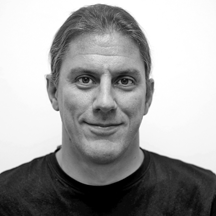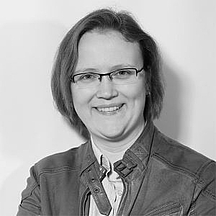Tracks of OOP 2023 Digital
An independent advisory board selects the lectures with reviewers after thorough examination and decides which speakers and topics are to be included in the program of the OOP Digital:

Software Architecture: New Approaches & Fundamentals, designed by Eberhard Wolff
There are always new trends in software architecture: Microservices or modular monoliths are currently of great importance. However, fundamental techniques for managing complexity with development teams, such as modules and information hiding, are often forgotten. Therefore, this track discusses not only current approaches but also these often-crucial topics.

Leadership, designed by Marc Bless
Employees' demands on their managers have become broader, leaner, more self-determined, and more diverse. Modern leadership requires personality, recognizable motives, and an open attitude towards people and new approaches. Self-leadership and self-responsibility are the important foundation for staying healthy as leaders and keeping the power to support people, teams, and organizations. This track provides impulses, practices, and styles for modern leadership.

Software Architecture Success Stories, designed by Michael Stal
Software architecting is a fundamental activity that mainly depends on whether a project is completed successfully or not. At least that is what we believe. But what are the main success factors in software architecture and software architecting? Do they comprise the software architects in charge, the architecture used, the tools and technologies employed, the cooperation between different participants and stakeholders, the competence in the team, or something else?
This track addresses success stories as well as the technologies, tools, patterns & styles, and methods they used.

DevOps - The Balance between Dev and Ops, designed by Sandra Parsick
DevOps should not be a new role for Developers or Operations. It should be understood as a synergy of both disciplines. Let's find the right balance for the greatest synergy effects.

Product Development in Balance, designed by Susanne Mühlbauer
Many companies have the challenge to create new and innovative products and business models and, at the same time, maintaining, or retire their existing products and business.
We provide strategies, methods, and approaches to find the right balance in product development. How do product owners, project leaders, and product managers cooperate within this trade-off? How important are company management and strategy?

Use Domain-Driven Design Now!, designed by Carola Lilienthal
Domain-Driven Design is a methodology for the whole software development process. In this OOP-track we will explore the roots of DDD and the various add-ons that have been created in the last years since DDD is on the market. Eric Evans, the founder of DDD, announced that DDD is no dogma but should be enhanced by its users. Let us explore how the DDD community is tackling this challenge!


SUSTAIN_ability - Responsible Steps into the Future, designed by Anke Nehrenberg & Johannes Mainusch
MEGATRENDS? They start small. And they consist of ordinary people and small changes. What changed for our speakers in 2022, and what can they share with us?
Small steps might trigger a giant leap in humanity. Let us take the first one.


The State of Modern Web Development, designed by Stefan Tilkov & Dorthe Luebbert
Invented more than 30 years ago, the web is still going strong, and web UIs remain the default for probably the majority of applications. In this track, we’ll take a look at the lasting fundamentals as well as innovations of the past few years.

Testing & Quality, designed by Peter Zimmerer
Effective and efficient software and system development require superior test approaches in place and a strong commitment to quality. Realizing the right mix of test methods and quality measures is no easy task in real project life due to increasing demand for the reliability of systems, cost efficiency, and market needs on speed, flexibility, and sustainability.
Therefore, this track provides practical guidance on how to address these challenges in the area of testing and quality with the right balance. Experts from different domains present key learnings from the past as well as new directions in the field, explain approved strategies and practices, and share valuable project experiences on how to make it happen

Social Integration, designed by Olaf Lewitz
Finding the right balance - as people in these interesting times. This track is about relationships supporting that balance. Relationships connect our past to our future - and they emerge and evolve in the present, just as the systems we work in and the systems we create. As engineers, we have a tendency to nurture our relationships less than on other systems we work on. Integration, in the words of neurobiologist Dan Siegel, means “honoring differences and promoting linkages”. As engineers, we’ve applied this successfully to systems and software … making it automatic and continuous. Now we want to focus on integrating social and technical systems, our organizations with our customers, our business with our IT, and the needed change with our agility. What will all of this make possible?

Trends & Techniques, designed by Jutta Eckstein
In this track, we examine the combination of software and business by exploring both –current and future trends & techniques. Amongst other things, we will take a look at technical coaching and taming technical debt as well as get out of maintenance hell. We will explore patterns and practices for APIs and how tests can help us develop better software faster. Moreover, we’ll discuss how micro-learning cycles will help to keep learning despite the lack of time and how to find the right balance for diversity, equity, and inclusion.

Signature Track: Finding the Right Balance
Frank Buschmann
Developing software successfully means constantly weighing and balancing many business, technical and methodological influencing factors and stakeholder interests. There is simply no black and white and no silver bullet. From a business perspective, we need to create systems and products that are not too minimalistic but also not overloaded with golden balconies. Methodologically, we need to find the right level of agility to enable development teams to realize software with appropriate speed and productivity.
How much architecture is necessary to give agile teams guardrails for development without hindering them too much in their development progress, but at the same time ensuring that teams do not develop past each other? Is it advisable to always use the latest software technologies or is it better to build on proven and established technologies? Does it have to be a new development or is it advisable to modernize existing software? How much trust should we have in AI and how much control should we exercise over the decisions of intelligent systems? Mastering these and many other trade-offs is not easy. All roles in an agile development must cooperate intensively with each other to make the right, balanced decisions among the relevant influencing factors.
To find this right balance, the Signature Track looks at selected topics in software development from a 360° perspective. The goal is to illuminate the area of tension in which decisions can be made, but also to show practical tips and empirical values so that teams can make the appropriate decisions.

